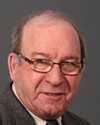Thank you very much, Mr. Mark. There again, members, are two more important components to the issues pertaining to economic development here in the north.
At this point we will go on to questions from members. We go in a pre-set order. The time for questions and answers is five minutes. That will start with the member's question, and by keeping the questions and responses as compressed as possible, we are able to hear more about the subject.
We'll begin with our first round of questions. We'll go to Mr. Russell for five minutes.



